Going to Seed
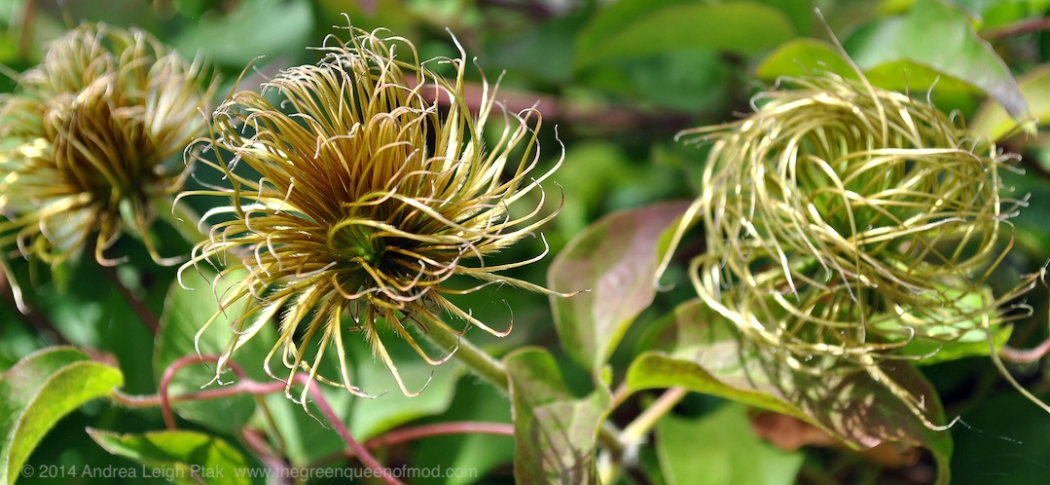
Spring Flowers Fade as Summer Dawns
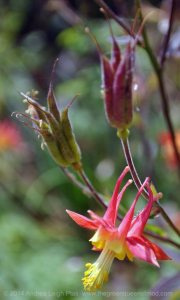 With the passing of the Summer Solstice, my garden marks the transition of my spring flowers from blossom to seed. Though I am always sad to see many of my favorite blooms disappear for the next nine months, I know that it is just part of the cycle of nature.
With the passing of the Summer Solstice, my garden marks the transition of my spring flowers from blossom to seed. Though I am always sad to see many of my favorite blooms disappear for the next nine months, I know that it is just part of the cycle of nature.
As camas, columbine, and other native blossoms fade, they become food for the many birds that inhabit my yard, as well as seeds for the birth of future generations of plants. I allow and encourage many to reseed themselves, ensuring a riot of color again next spring. I also collect seed to share with friends or start for spring planting.
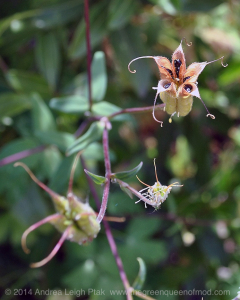 I always have good luck with native Western columbine. When their star-shaped seed pods turn brown, I know they will soon be opening to spread their tiny black pellets across my yard. As the pods get papery, I shake the plants to make sure there will be new ones in the same spots next year. Since I have dozens of plants throughout the yard, I only have to do this a few times. That leaves a ton of seeds ripe for collection.
I always have good luck with native Western columbine. When their star-shaped seed pods turn brown, I know they will soon be opening to spread their tiny black pellets across my yard. As the pods get papery, I shake the plants to make sure there will be new ones in the same spots next year. Since I have dozens of plants throughout the yard, I only have to do this a few times. That leaves a ton of seeds ripe for collection.
To collect the seed, I go from plant to plant with my nippers and a brown paper bag. I cut the stalk below the last seed pod and drop it into the bag, top down. When I’ve gathered as many as the bag will hold, I shake them vigorously to dislodge as many seeds as possible. Then, I crush any holdouts between my thumb and forefinger to get every seed I can. Once I have a ton of seeds at the bottom of the bag, I transfer the empty husks to my compost pile, leaving a fairly clean amount for saving or planting.
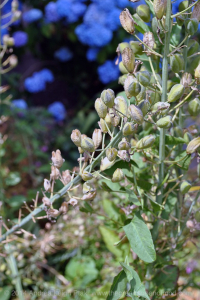 This year, I am trying the technique with my native camas bed. I always encourage it to reseed, but I have never tried propagation. After reading the detailed instructions on the Mr. Camas website and Native Plants and Wildlife Gardens—a fantastic resource on gardening with native plants—it seems that camas is not easily started in seed pots, as it requires cold winter temperatures to germinate properly. Instead, I am devoting a spot that currently holds annual sunflowers to be my germination bed overwinter. If the seeds sprout, I’ll wait until late spring to transplant the bulbs into other locations and pots for others.
This year, I am trying the technique with my native camas bed. I always encourage it to reseed, but I have never tried propagation. After reading the detailed instructions on the Mr. Camas website and Native Plants and Wildlife Gardens—a fantastic resource on gardening with native plants—it seems that camas is not easily started in seed pots, as it requires cold winter temperatures to germinate properly. Instead, I am devoting a spot that currently holds annual sunflowers to be my germination bed overwinter. If the seeds sprout, I’ll wait until late spring to transplant the bulbs into other locations and pots for others.
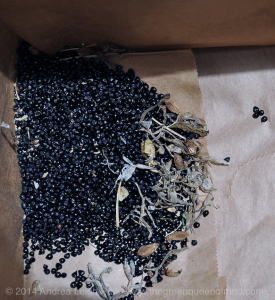 I’ll also be collecting seeds from the native lupine, Jacob’s ladder, and bleeding hearts, to see if I can have success with starting them for transplanting. My goal is to develop a small native plant nursery from my home—primarily to sell on behalf of the Seward Park Audubon Center in the spring of 2015. I will be leading a Backyard Wildlife Habitat Super Saturday (dates yet to be determined), based on the successful event I spearheaded in April 2012.
I’ll also be collecting seeds from the native lupine, Jacob’s ladder, and bleeding hearts, to see if I can have success with starting them for transplanting. My goal is to develop a small native plant nursery from my home—primarily to sell on behalf of the Seward Park Audubon Center in the spring of 2015. I will be leading a Backyard Wildlife Habitat Super Saturday (dates yet to be determined), based on the successful event I spearheaded in April 2012.
Aside from the bounty of seeds as a food source for native fauna and a means of rebirth, plants going to seed add a myriad of textures and character to a garden. The seed pods can be just as attractive as the flowers themselves, as the following photo essay from my garden illustrates.
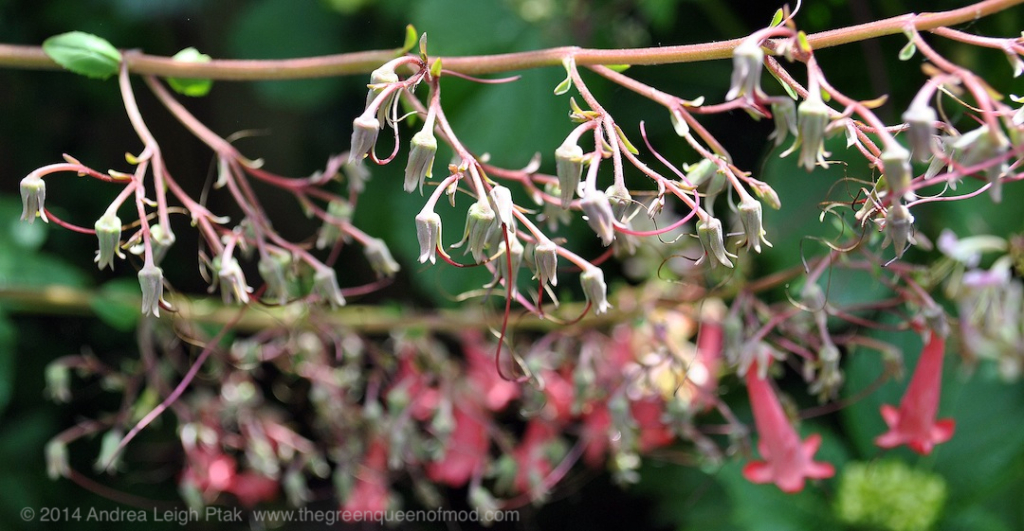
Hardy fuscia tends to feature a mixtures of seeds and blossoms all summer long as new blooms replace the old.
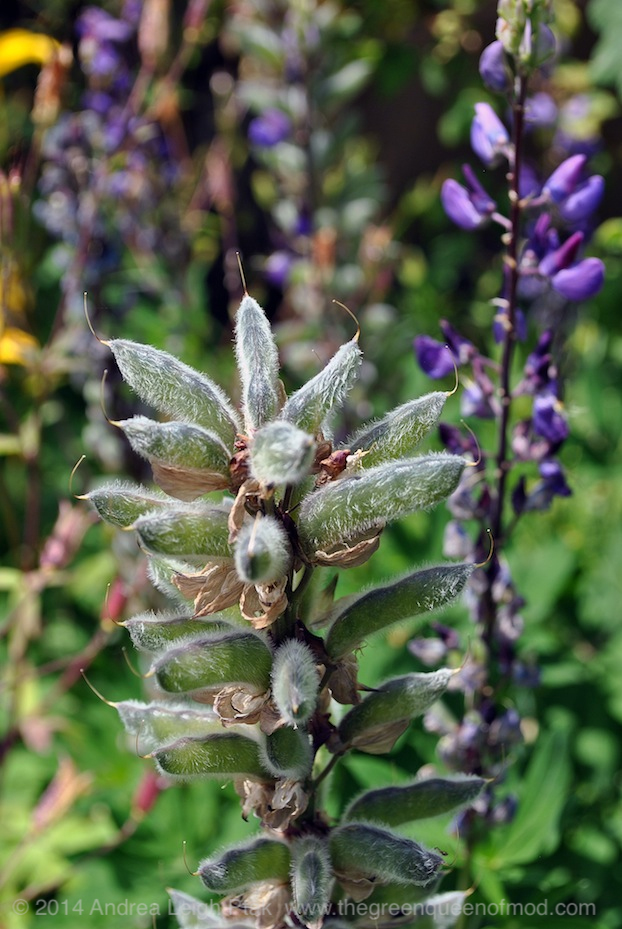
Native lupine seedpods ripen as blooms fade in the distance.
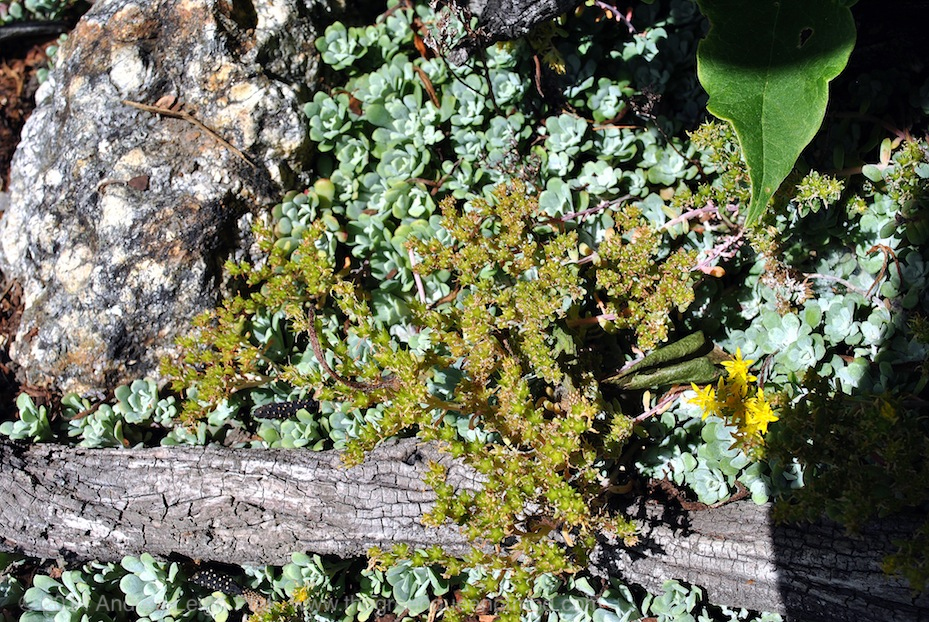
Native sedum seed heads create tiny, bright green stars alongside yellow blossoms.
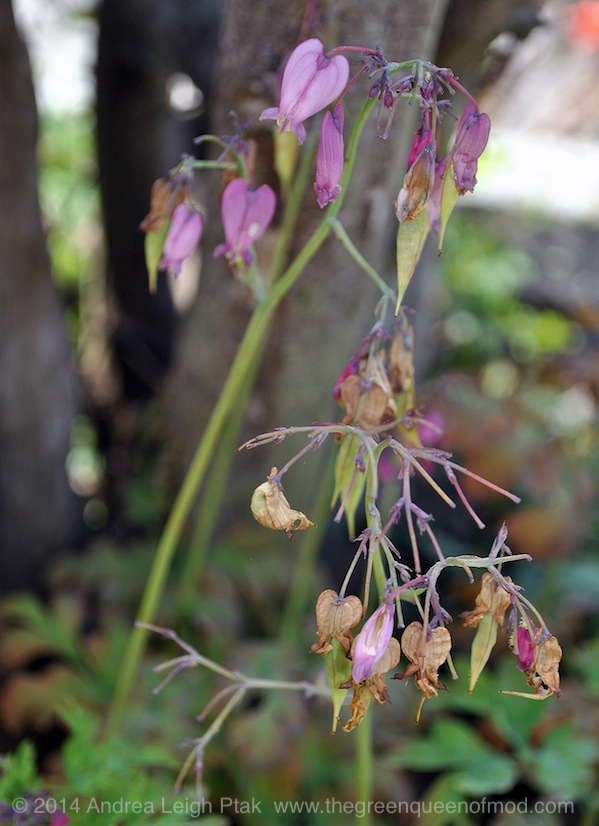
Native bleeding hearts retain their shape as blossom turns to seed.
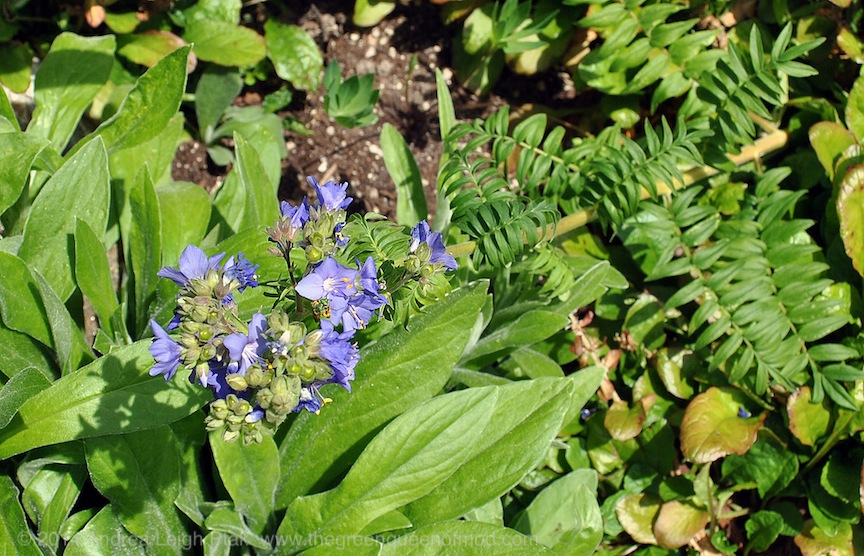
Jacob’s ladder blooms and goes to seed at nearly the same time.
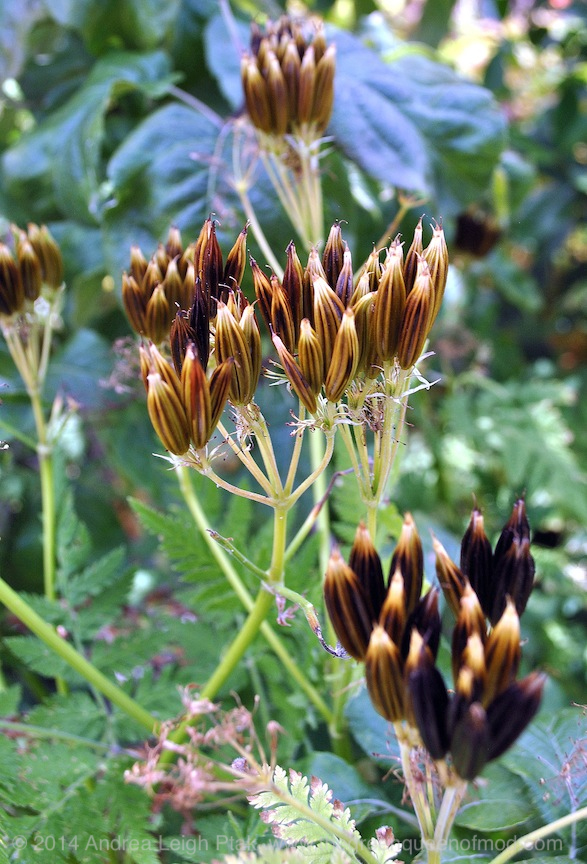
Sweet Cecil’s delicate white flowers transform into large, boldly striped seed pods.
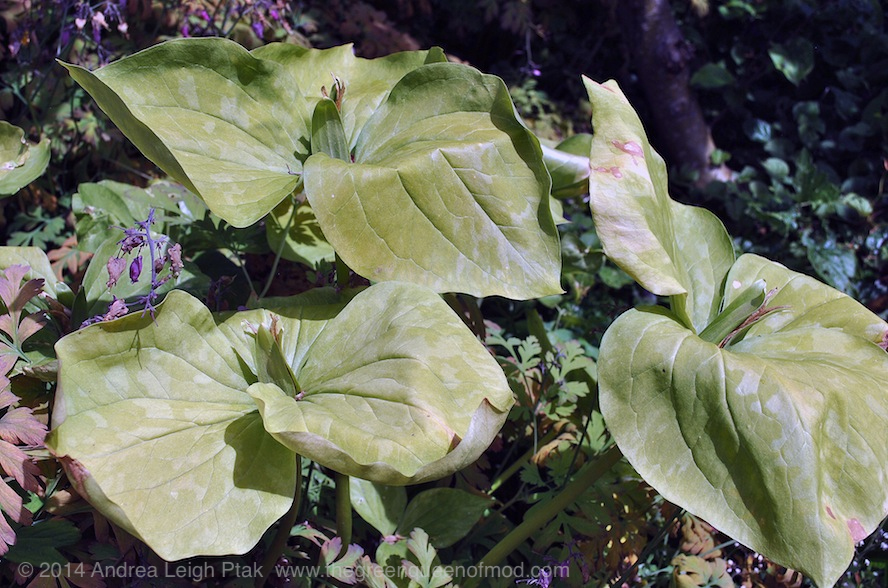
Trillium’s yellow flowers disappear as seed pods take their place.
- Words by Andrea Leigh Ptak
- June 23, 2014
- 4 Comments
Love all your plants! I believe the only one I do not have is trillium. I need to work on that. 🙂
Thanks Vanessa. We had better luck with the yellow trillium than the white—the bulbs of which were promptly eaten by squirrels the first fall.
Beautiful photos Andie.